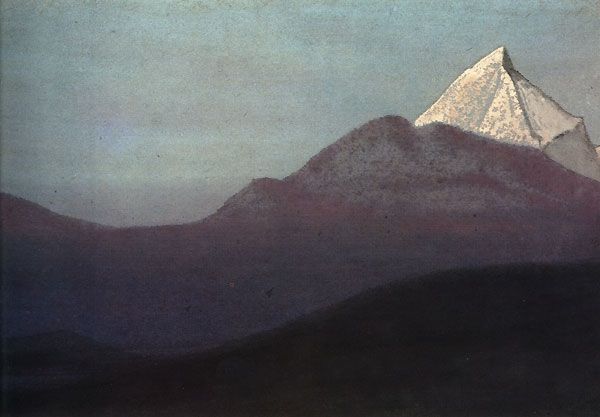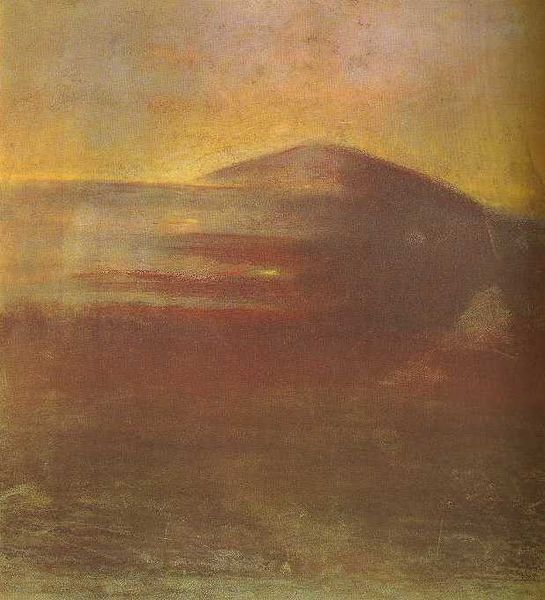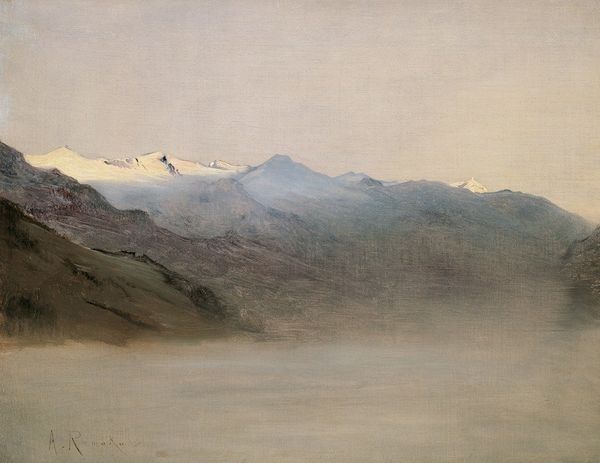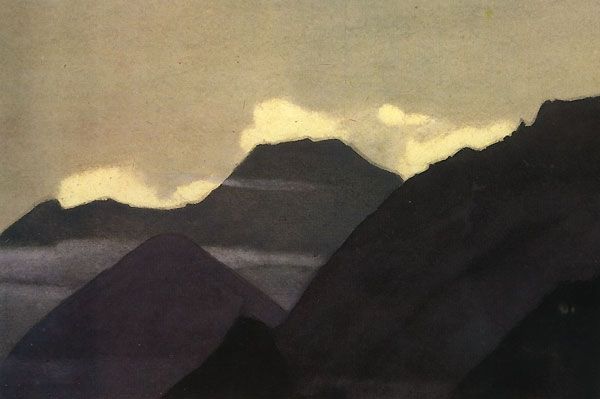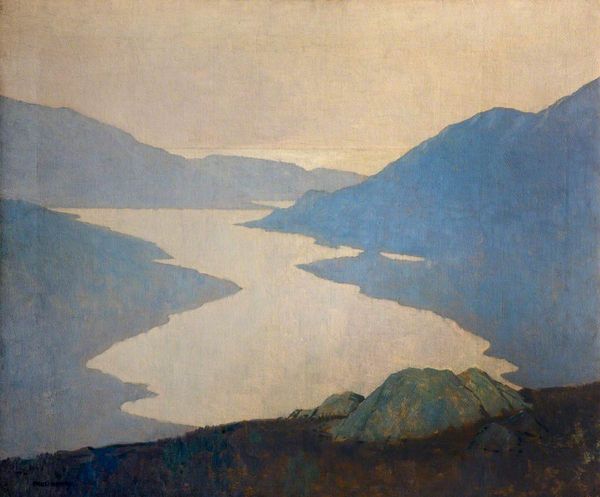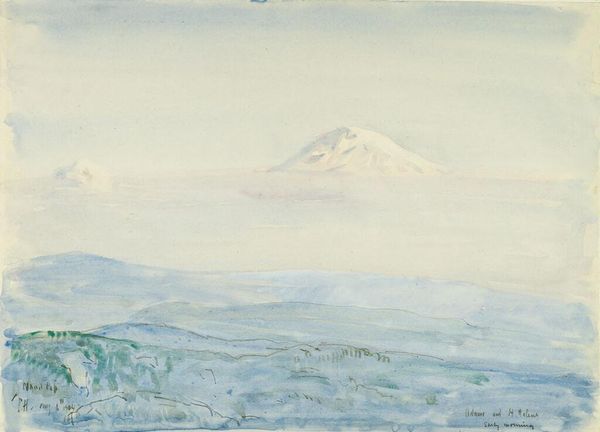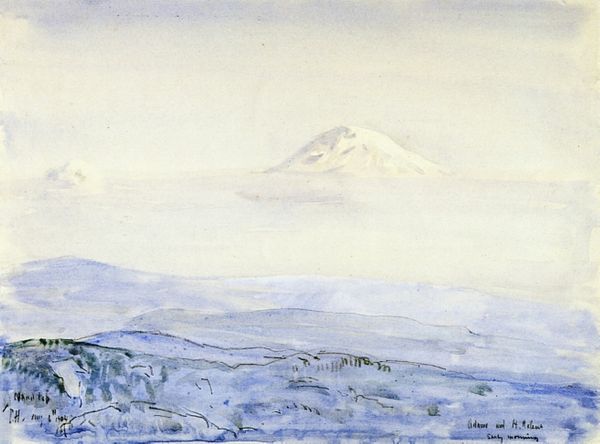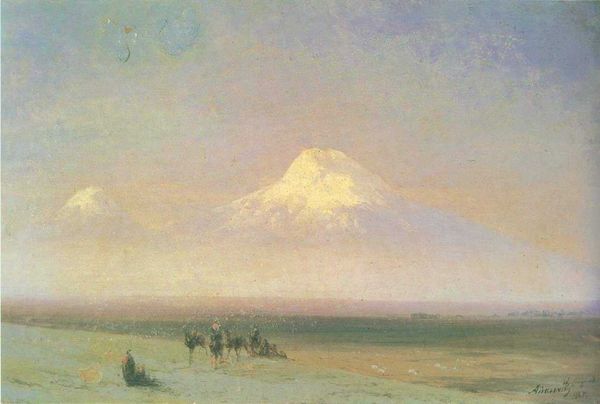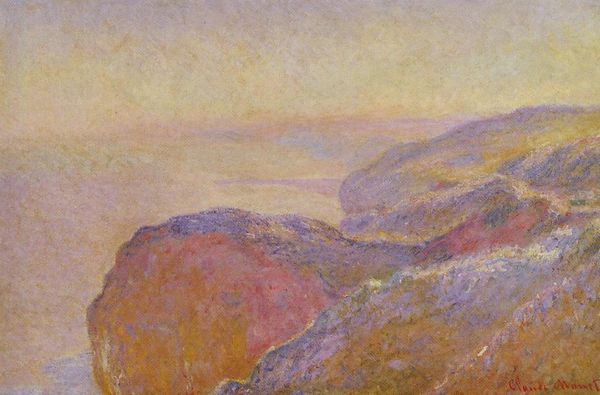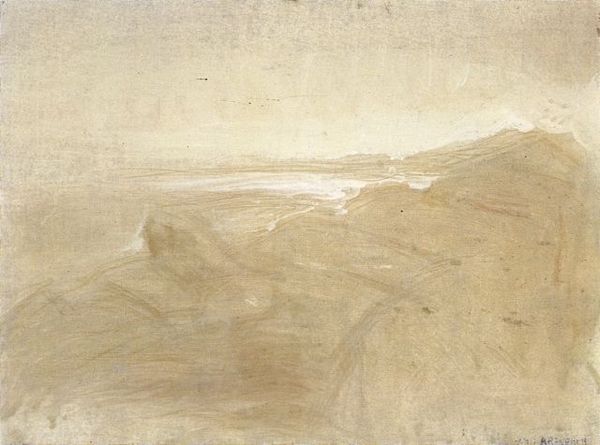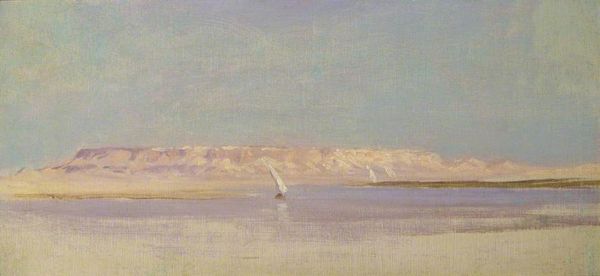
Copyright: Public domain
Editor: We’re looking at "Elbrus" by Arkhyp Kuindzhi, painted around 1900. It's an oil painting, a landscape really dominated by atmosphere. There’s this overall hazy, dreamlike quality that feels…distant. What do you make of it? Curator: It’s fascinating how Kuindzhi captured Elbrus. The painting resonates with late 19th-century artistic interests in national identity. Landscape painting was then used to forge public ideas. How does Elbrus, this natural symbol of the Caucasus, work within the Russian artistic and political context? Editor: So it’s more than just a pretty mountain scene? Curator: Precisely. Consider how the Transcaucasus became part of the Russian Empire in the 19th century. How did artists like Kuindzhi contribute to shaping perceptions and consolidating Russian cultural authority over newly acquired territories? Did paintings become silent tools in the Empire’s arsenal? Editor: I see your point. It's not just about capturing the mountain, but also staking a claim. Curator: It’s a reflection of the societal context – Russia’s expansion and its efforts to define itself. Think about other visual representations from that period. Do they project power, beauty, or something else entirely? Editor: That’s definitely given me a lot to think about - I was so focused on the pure landscape aspect. I suppose there's always more to it. Curator: Always. Understanding the art’s position within culture helps unravel the deeper narratives. The painting goes beyond representing a mountain. Editor: Thanks, it does offer a different view on landscape art. Curator: It reflects how much of art history lies just outside the frame itself!
Comments
No comments
Be the first to comment and join the conversation on the ultimate creative platform.

